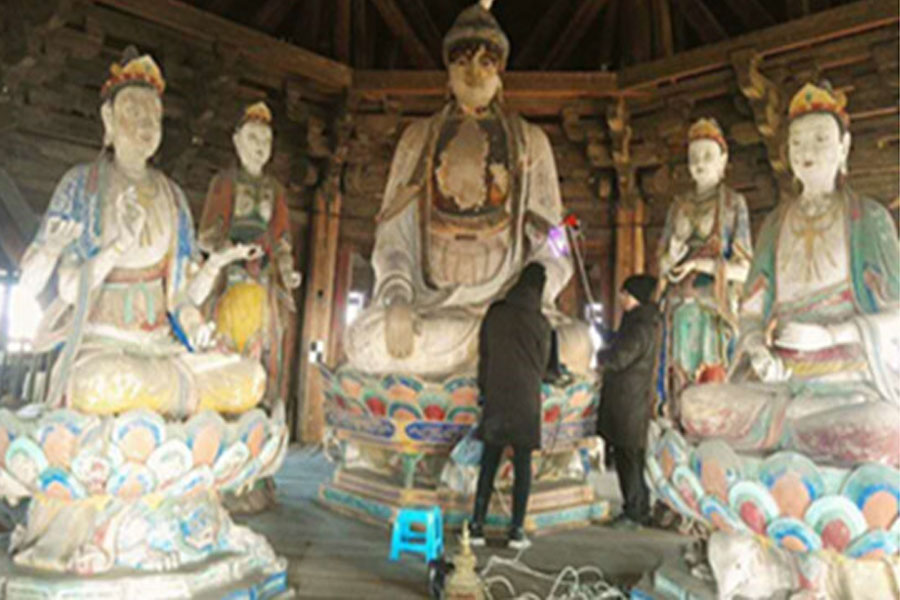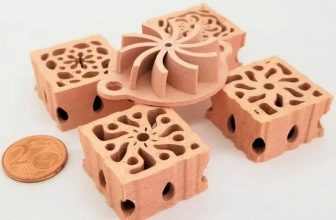
Shakya’s Tower
The full name of Sakyamuni Pagoda is Fogong Temple. The Sakyamuni Pagoda is located in the Fogong Temple northwest of Yingxian City, Shuozhou City, Shanxi Province. It is commonly known as Yingxian Wooden Pagoda. It was built in the second year of Liaoning, Qingning and Ning (the third year of Song Dynasty and the third year of AD 1056), and the sixth year of Jin Mingchang (the year of Southern Song Qingyuan year of AD 1195). It is the tallest and oldest existing wooden tower in China. Building, a national key cultural relics protection unit, and a national AAAA-level scenic spot. Together with the Leaning Tower of Pisa in Italy and the Eiffel Tower in Paris, it is also known as the “Three Wonders of the World”. In 2016, Sakyamuni Tower was recognized by the Guinness Book of World Records as the tallest wooden tower in the world.
The Sakyamuni Tower is 67.31 meters high, with a bottom diameter of 30.27 meters, which is a flat octagonal shape. The consumables of the whole tower are 3,000 cubic meters of red pine wood, more than 2,600 tons, pure wood structure, no nails and no rivets. Two Buddha tooth relics of Sakyamuni are enshrined in the tower.
Building structure: flat octagonal, five-story floor, four flats and six eaves pavilions, with flat railings on the second floor and above, forming an outer corridor. Double-layer annular sleeve frame is used inside and outside. In the dark layer of the tower, the beams between the inner and outer trough columns are connected by diagonal bracing to form an octagonal cylindrical inner and outer trough frame. A total of 54 different forms of dougong are used in the whole tower. There are so many types that are rare in China, and they are called the Dougong Museum by the world.
Technical means used in the project
In order to fully preserve the most complete and accurate three-dimensional data of Yingxian Wooden Tower, the implementation of this project adopts large-space 3D scanning technology, high-precision scanning technology, matrix photography technology and drone technology to fully correspond to the county wooden tower for data collection.
Device Description:
Large-scene 3D scanner: Large-scene 3D scanning is also called ground lidar, which is currently widely used in the fields of ancient architecture, archaeology, and historical preservation buildings. The use of 3D scanning equipment can quickly collect massive 3D coordinate points of ancient building structures, thereby forming a point 3D point cloud model of the measured object. The point cloud model can be used to establish the reverse model of the building and analyze the space deformation.
High-precision three-dimensional scanner: The high-precision scanner can collect data from single cultural relics such as colored sculptures in ancient buildings. At present, the accuracy of high-precision three-dimensional scanning equipment can reach 0.1 to 0.005 mm.
Matrix high-resolution photography: In accordance with the National Cultural Heritage Administration’s mural data collection standards, the inscriptions, murals, and plaques in the corresponding county wooden towers are collected by matrix photography.
UAV: As the tower is 67 meters high, in order to collect 3D data on the facade of the wooden tower, the currently widely used UAV photogrammetry technology is used.
The project site
- Data collection of wooden pagoda flat floor structure: The wooden pagoda flat floor is located between the two bright floors, and large-space scanning equipment is used to complete data collection.
- The bright layer of the wooden tower is composed of pillars and diagonal braces to form an inner and outer groove structure, and data is collected on the outer groove of the bright layer.
- Railings are installed on the eaves of the outer tower on the bright floor to form a corridor, and large-space scanning equipment is used to collect data on the outer corridor.
- For the murals on the first floor of the wooden tower up to 7 meters, use special equipment for matrix shooting in accordance with the technical specifications for mural collection.
Through the comprehensive application of a variety of technical means, we have successfully collected the accurate 3D data model of Yingxian Wooden Pagoda, which will bring great convenience to the 3D archiving, 3D restoration, display, and derivative development of later cultural relics.





